Stay dry on the trail: tips for hiking in the rain

Adverse weather conditions and atmospheric changes are frequent in the mountains. Ideally, the trekking clothes We need to keep ourselves dry, to avoid all the discomfort that can come with wearing a garment laden with moisture. Factors such as sweating when the temperature is high or intense activity, rain or snow, can cause clothing to get wet, with the consequent problem, which can go far beyond a lack of comfort.
Some shortcuts: How to choose clothes? / The three layers / Key features against humidity / And the rain came / How to avoid sweating in the rain? / Moisture technology / 5 tips.
How to choose clothes?
It is advisable to wear a type of clothing made with textiles that have the quality of being absorbent, breathable, and that can keep you dry.
- In addition to drying faster, these fabrics absorb the skin's natural moisture, so sweat won't be a problem and environmental factors such as rain and humidity won't affect you as much. We can find undershirts from 20 €, personally in my backpack I've had the legendary Helly Hansen blue (click here to buy it)It is well worth the money it cost me at the time.
- Very important: avoid cotton. This material gets wet quickly, but the speed at which it dries is very slow. This is why cotton clothing is not recommended for hiking.
(READ ALSO: Hiking in winter: what equipment should I bring?)
Objective: To stay dry
- The goal is to stay dry. Exaggerated layering of clothing will cause you to sweat excessively. On the contrary, choose a synthetic base layer, an insulating layer and a waterproofing layer. This is the theory. We call this method the three-layer system.
- It is highly recommended carry spare clothing. So ask yourself whether you want to carry a light backpack or carry a little more weight and gain comfort by carrying a spare set of clothes.
The three layers
In general, mountaineering experts recommend that clothing should be made according to the so-called the "three layers" method. Each of these layers fulfils a function that will help the comfort of the body. (READ ALSO: How to dress for the mountains: the three-layer system)
- Inner layer. This is the layer that is attached to the skin and has the function of keeping moisture away as much as possible. The materials suitable for this layer should be polyester or polypropylene. Nowadays, garments made with merino wool also provide interesting features for activities in mountain environments: thermal insulation and breathability, making them a natural choice.
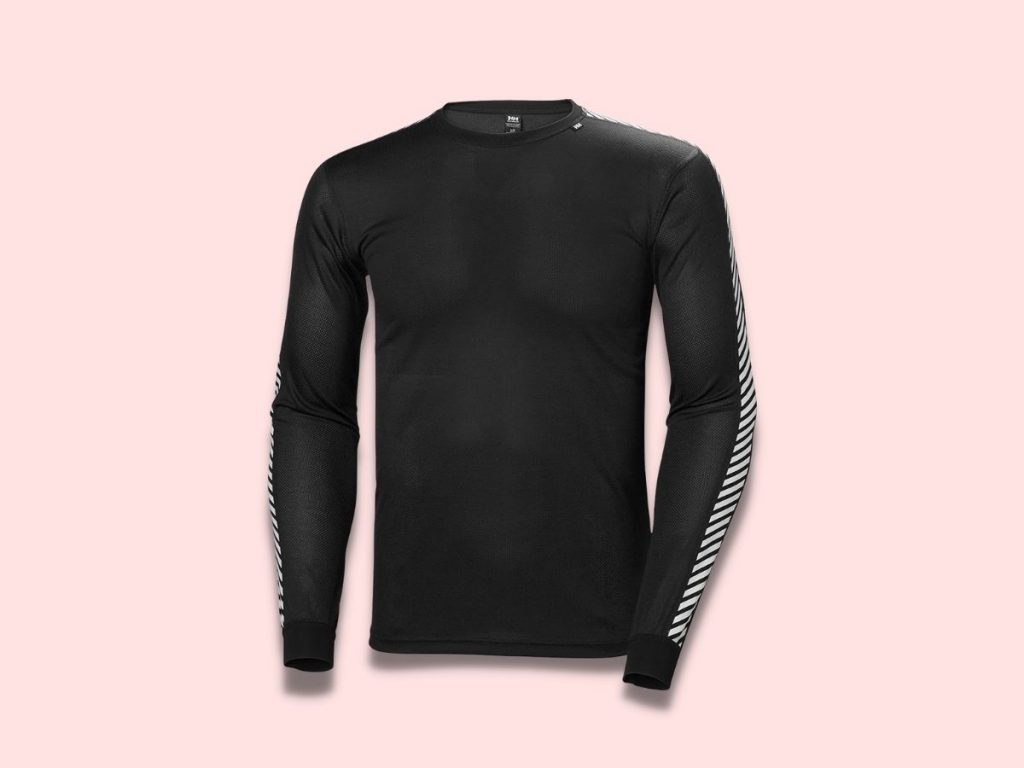
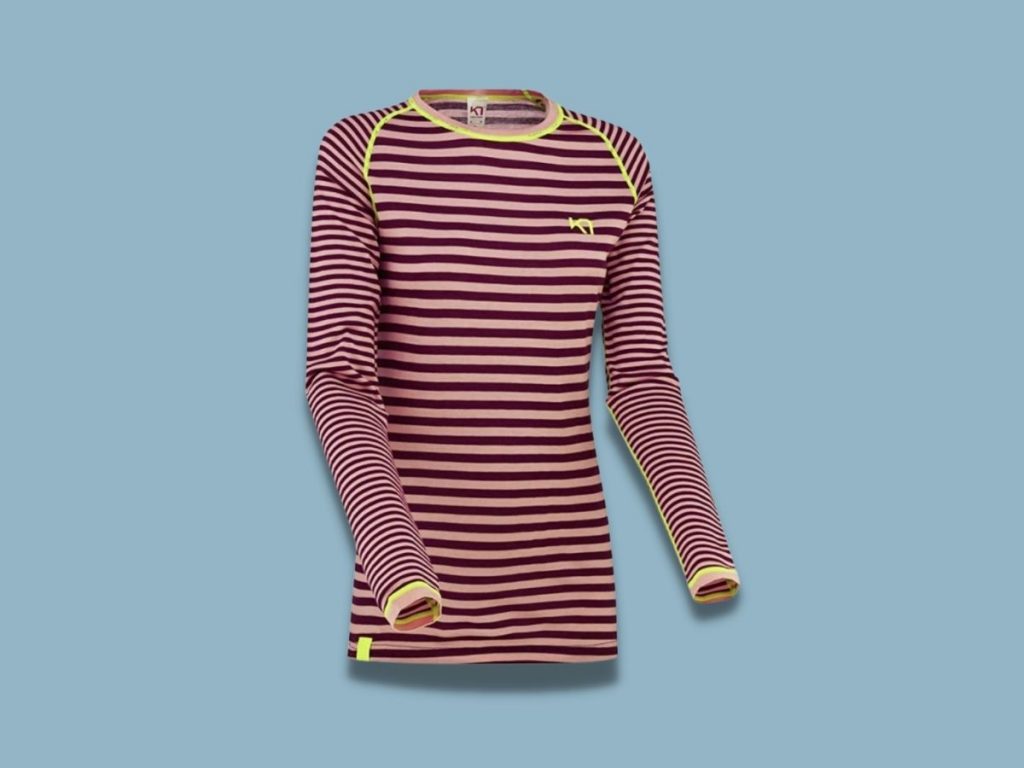
- Middle layer. This layer will not allow outside discomfort to reach the skin. Generally, they will be made of synthetic and breathable fibresThe clothing is lightweight and does not restrict freedom of movement. All brands have linings of different weights, which we can combine depending on the conditions we find. Here we present a Lightweight Helly Hansen lining.
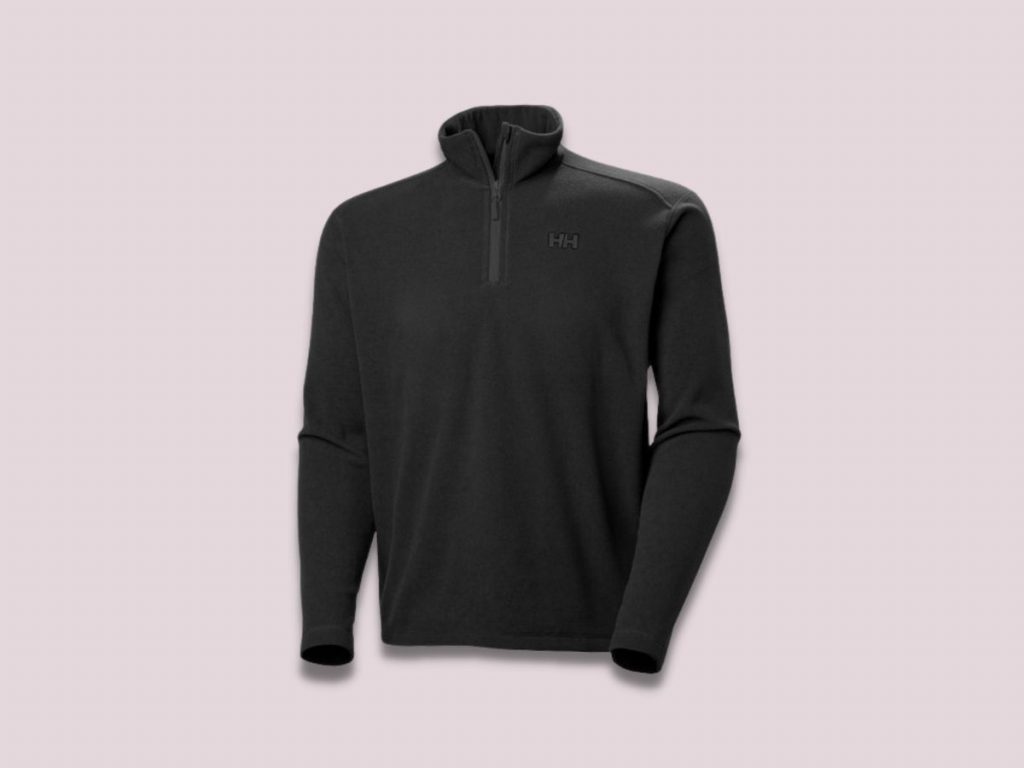
- Outer layer. This will be the "cover" or "shell". It will cover and protect the other two layers. It must be both waterproof and breathable.
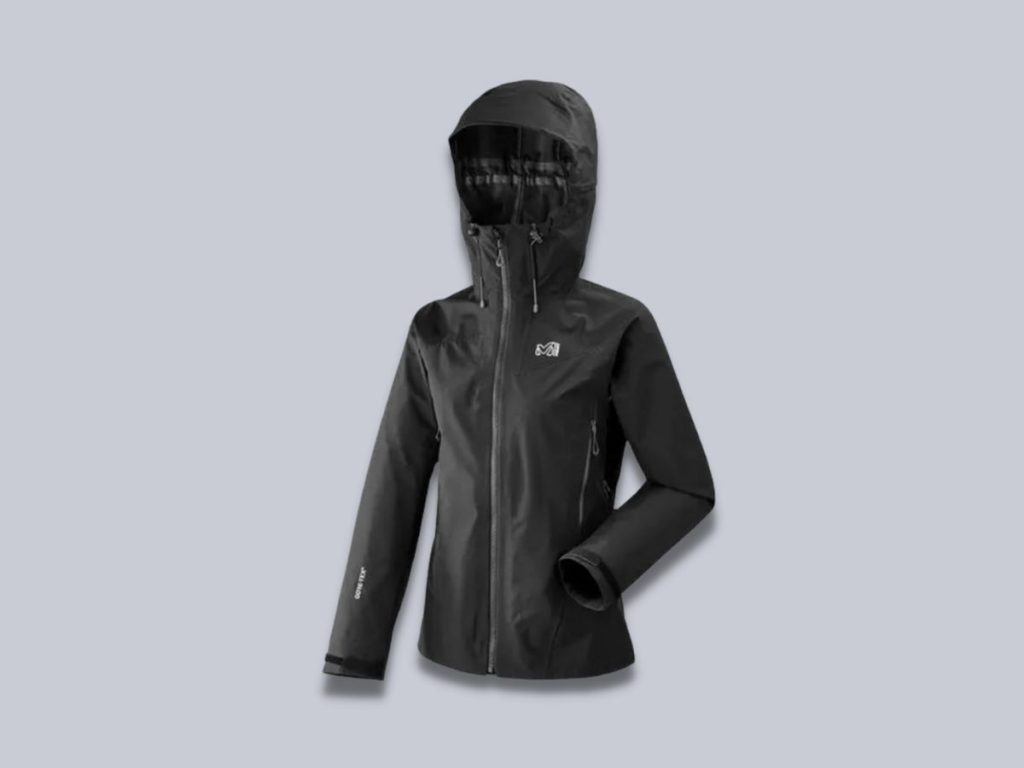
Key features against humidity
There are some features that are good to look for in clothing to wear for wet or rainy activities.
- For example, for mackintoshes and jacketsit is good to choose them without fixed inner lining (it will be up to us to decide to include one below this last layer), that cover the wristspreferably adjustable with Velcro. This will prevent rain from running down your arms.
- The adjustable mackintosh hoodThis will help to give you better protection, but without reducing visibility. You should also check that the mackintosh is sufficiently long to cover your bum. Or with the right design to let the water run off without getting you wet.
- Buying a good mountain jacket is a good investment. You can find models ranging from 150 euros to over 500 euros. Brands such as Millet have high prices for their top-of-the-range garments, but they have models with an excellent price-quality ratio such as the model MILLET Kamet Light GTX Jkt (Female)/Man.
And the rain came
If you see that the clouds are about to burst into heavy rain, don't wait until the rainfall intensity is high, protect yourself with the first drops. Put on your waterproof clothing immediately to avoid wetting the layers closest to the skin.
Don't raise your arms in the raincan be a bad idea. In heavy rain, raising your arms will mean that water will enter your body through your fists, soaking your clothes.
If you use trekking poles (see here for an article where we help you to choose them)You can shorten them so that the part of the wrists that is exposed to the rain is smaller.
How to avoid sweating in the rain?
If weather conditions dictate, or you decide to continue with the activity despite the rain, the ideal is to stay as dry as possible underneath the waterproof layer.
To this end, it is best to reduce the amount of perspiration from the body somewhatHow? intensity of activity and uses the closures that the clothing may have so that the heat emitted by the body can be released.
It is also important that the clothes we wear from base is sufficiently absorbent to wick moisture produced by perspiration away from the skin.
Here it is a question of prevent the inner layers from becoming damp with sweat and the body from cooling down.
A small remedy to fall back on when they've gotten wet gloves and socks, is to dry them using body heat.Place them between the layers as you walk, not rolled up but spread out. This way they will dry more easily.
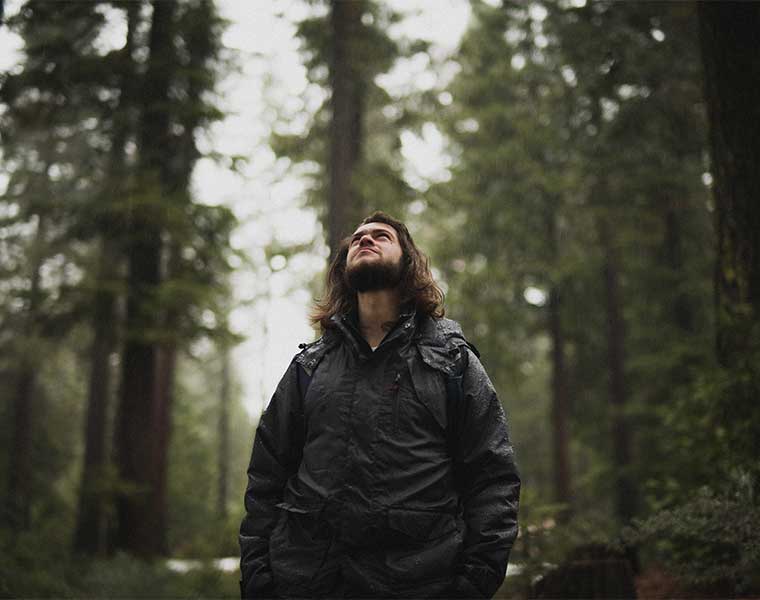
Moisture technology
There are various parts on the market that are specially designed to prevent the onslaught of rain and moisture.
These may include special holes for ventilationlaser-cut. You can also count on zips or zips in places such as cuffs and armpits, to allow heat and moisture to escape easily.
There are also textiles that are designed to repel moisture. These types of textiles usually have a hydrophobic" surface water-repellent. The combination of this fabric with fabrics from high breathability creates parts that help moisture to escape from the body without dampening it and at the same time do not allow moisture from the outside to reach the inside.
Materials are evolving along with the activities we do in the mountains. The different types of GORE-TEX® membranes is nothing more than the adaptation of garment technology to new needs. Greater waterproofness, breathability, lightness... in the end, all of this makes it possible to carry out activities more quickly, more self-sufficiently, more safely and more comfortably.
READ ALSO: Umbrellas for mountaineers: the pros and cons of their use in the mountains".
5 tips for hiking in the rain
Rain is inevitable and you will have to walk in the rain while hiking. That's why you need to be prepared for it, and more importantly, be prepared so that it doesn't completely ruin your plans.
Don't let a cloudy forecast with a chance of rain ruin your plans! Here are some tips for hiking in the rain:
(We review everything we have learnt previously in the article)
1. Wear non-cotton clothing and waterproof footwear.
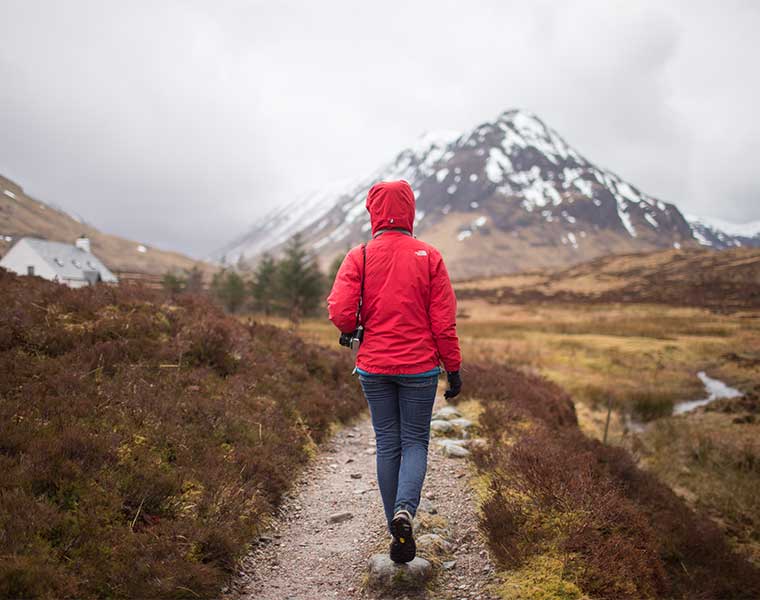
The mountain clothing The clothing to be used on that rainy day should be one of the main tools to make the journey comfortable and exciting. The clothes you wear should not be made of cotton. The reason? Cotton is not capable of removing sweat from the skin, so it takes a long time to dry. It will absorb our sweat. This means that in humid conditions, such as in the rain, it will cool the body and there is a risk of hypothermia. We will use the three-layer system, types of fabrics and layered garments, for better functionality.
The most advisable are pieces of polyester, wool or nylon, for undercoats. Preferably, for an outer layer, the jackets must be waterproof, water-resistant, but not forgetting breathability. to wick away perspiration. It must be ensured that raindrops run off without being absorbed by the fabric. There are waterproof fabrics such as gore-texalthough there is a large typology with the same functions, which provide the garments with the characteristics we have mentioned.
Likewise, footwear must be waterproofto keep your feet warm and dry. Remember that if it rains, you will be walking in puddles and on wet ground. Whichever model you choose, the soles should be deep for mud, rocks and slippery logs. As we have mentioned for the outer jacket, we will have to analyse which waterproof layer our boots have: water resistance is equally important, as is breathability to wick away perspiration.
An article within our equipment, such as a umbrellas for mountaineerscan make for a pleasant walk in the rain.
2. Carry extra and spare clothing in a backpack that is well protected from the rain.
Wet luggage is one of the biggest drawbacks when hiking in the rain, so precautions must be taken to keep your luggage completely dry. There are many backpacks mackintoshes on the market, but care must be taken to ensure that their seams are sealed.
For more information protection against rainThere are covered or linings -backpack covers- which will keep the equipment dry inside the rucksack. A more homey option is to put the equipment inside bin liners, which will keep it dry.
It carries enough spare clothes. Especially on routes lasting several days. Extra clothing is a must, especially if rain is forecast. With a little precaution you can stay warm and dry for the entire route, even if it rains.
3. Watch your step!
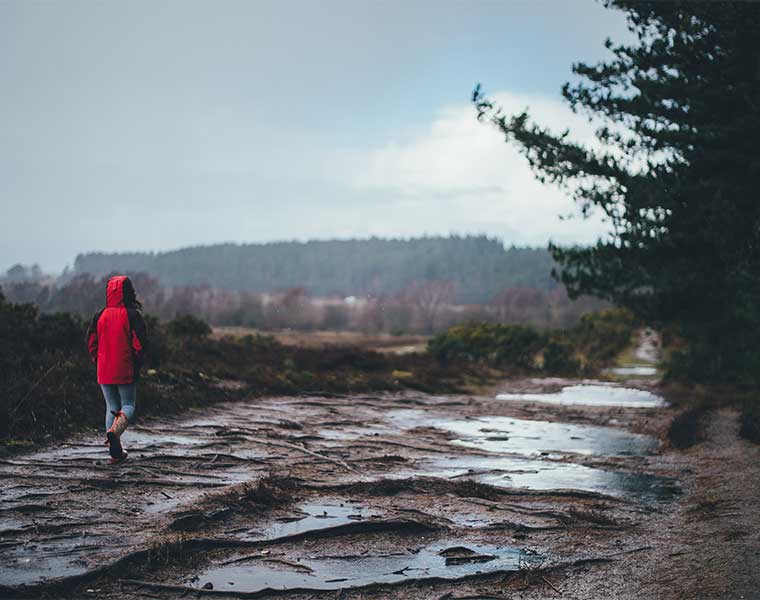
Rain can not only make clothes wet, but will turn some trails into very slippery terrain. On rocky terrain or in clayey areas, slippery surfaces can be a great nuisance to walk on and a safety issue. For this reason, you should pay close attention when walking on wet ground to minimise the risk of falling. or accident.
A fundamental part of walking in the rain is to avoid certain types of paths, for example, slippery rocky paths in the rain, or crossing streams, as there is a great risk of stepping on the wrong foot and causing a fall. On such slippery terrain the use of trekking poles can be of great help..
4. Preventing hypothermia and dehydration
With ambient humidity and in our body increases the risk of suffering hypothermiaIt is therefore important to learn to recognise its first symptoms, such as confusion or shivering. To prevent it, you can wear woollen or nylon clothing to keep warm and dry at all times. If you get wet, you should change your clothes as soon as possible.
- READ ALSO: What I need to know to avoid hypothermia
With regard to the dehydrationYes, it is possible to get dehydrated in the rain. The reason is very simple, many people forget to drink water in the rain. So this should not go unnoticed, even in the middle of a downpour. It is necessary to stop from time to time and drink and eat.
5. Choosing the right place to camp
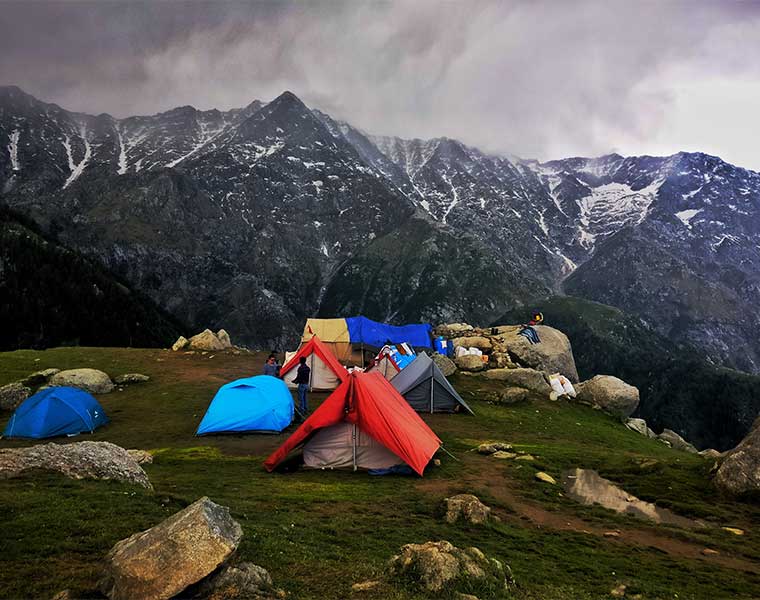
If you want to camp after your day's activity, you must properly analyse the right place for it. The ideal terrain would be high and dry, avoiding humidity and water.
Avoid places where rain can be channelled and accumulate. The soil must not be too soft, or too waterlogged, as it will easily fill with water during rainfall.
Avoid locations near branches that are about to fall, as they may be blown over by the wind. And if you think there will be a storm, it is a bad idea to stay close to slopes or rivers.
Once the site has been chosen it is essential to keep the inside of the tent dry, this can be made easier by placing an additional tarpaulin over the tent. It is also important to keep the interior well ventilated to avoid condensation.
Once the tent is set up, it is time to take off your wet clothes and put them in a bag. Place them outside the interior of the tent; no moisture should be introduced into the tent.
Fastpacking is not about going faster. It's about going lighter.
If you come from classic trekking, this is the next step: learning to move with less weight,
more fluid and enjoying every kilometre more.
Join the channel and start discovering what lightness feels like.
